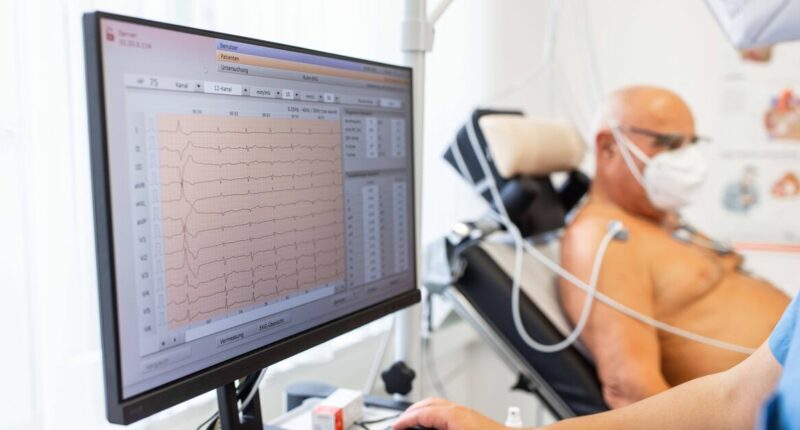Share this @internewscast.com
Health professionals are sounding the alarm following a recent report that highlights a concerning decline in physical activity among people in the UK. This downturn in movement could potentially lead to serious health repercussions.
Physiotherapist Sammy Margo warns, “The UK is experiencing a significant drop in physical activity levels. More Brits are leading increasingly sedentary lifestyles, which is troubling given the clear mental and physical health benefits of regular movement.”
Margo further explains that a study conducted by Deep Heat and Deep Freeze, brands known for muscle and joint care, uncovered alarming trends in exercise habits. She notes, “The report reveals that one in seven individuals, regardless of age, confess to never exercising. Alarmingly, nearly half of those aged 45 to 60 reported not engaging in any formal exercise in 2025, a sharp rise from the 24% who reported inactivity in 2022.”
The consequences of inactivity are significant. It raises the likelihood of developing various health issues such as obesity, heart disease, stroke, high blood pressure, and type 2 diabetes. Inactivity also heightens the risk of certain cancers, osteoporosis, and falls, in addition to negatively affecting mental health, potentially leading to depression and anxiety. Even a few inactive days can result in reduced muscle strength and impaired circulation. According to a comprehensive study from the United States, inactive adults could potentially extend their lifespans by 6.8 years if they incorporate more exercise into their lives. However, 42% of people cite pain as a barrier to regular physical activity.
Tackling inactivity
Margo offers practical advice to combat this trend: “Integrate movement into your day just as you would any other commitment. Begin by setting a reminder every 30-60 minutes to stand, stretch, or take a brief walk, ideally outdoors or even just up and down a flight of stairs.”
She emphasizes the importance of warming up: “Preparing your body before any activity is crucial to promote blood flow to your muscles. I personally use Deep Heat Muscle Massage Roll-on Lotion to warm up. The combination of massage and heat not only aids in preventing injuries but also alleviates existing aches and pains. Heat therapy enhances blood circulation to the muscles, delivering vital oxygen and nutrients, which helps to relax tense muscles and reduce inflammation.”
Consider chores as exercise: “Household tasks indoors and out can raise your heart rate. Treat them as part of your activity plan.”
Be more active at work: “Stand for phone calls, try walking meetings, take the stairs and park further away or get off the bus or train a stop earlier than normal. Swap scrolling for a brisk walk during lunch.”
Try cold therapy: “Cooling down after exercise is essential, especially if you experience any discomfort while moving. Try gentle stretches or a slow five-minute walk to help your body transition and to ease minor aches, use Deep Freeze Glide-on Gel, which provides scientifically proven cooling relief without the fuss of using actual ice. Cooling therapy works by reducing blood flow, helping to calm minor aches and pains in muscles and joints.”
Set clear goals: “Aim for the NHS guideline of 150 minutes of moderate activity per week, such as brisk walking, and track your progress. Find an activity buddy to help motivate you to keep to your planned activity.”
Keep targets realistic: “Consistency is key. Start with manageable goals and build gradually. Try to sit as little as possible during the day, aim for 30 minutes of walking, swimming, cycling or running daily, and add two weekly strengthening sessions with guidance if needed.”















